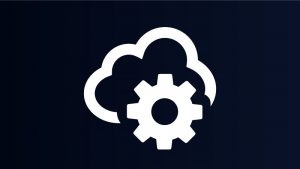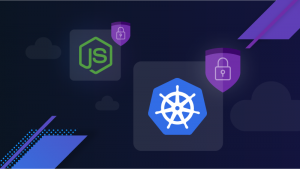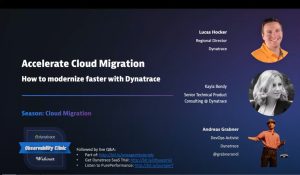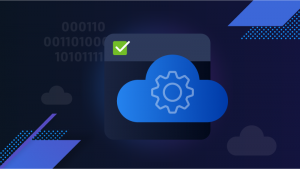Organizations remain preoccupied with cloud application modernization as they move to the cloud, and this process is ongoing, not a moment. Cloud app modernization is a key theme at AWS re:Invent 2022.
Today’s organizations know they need cloud environments to stay competitive.
Indeed, according to some research, more than 90% of organizations now use cloud computing. And Gartner predicts that cloud-native platforms will be the foundation for some 95% of new digital initiatives by 2025 — up from less than 40% in 2021.
But many companies’ IT infrastructure doesn’t start out in the cloud. Instead, teams migrate it there over time. As a result, many organizations house various legacy technologies in their estates. Many organizations turn to cloud migration and cloud application modernization to gain the benefits of serverless environments, such as flexibility, scalability, and more cost-effective cloud infrastructure.
But the process of cloud migration brings complexity. According to some data, 93% of technologists find cloud application modernization challenging. Moreover, according to IDC data, only 35% say their approach to modernization and rationalization is effective.
This struggle may be because cloud modernization is a process, not a singular event—or a “lift and shift”—in which applications are ported to the cloud without being redesigned. Lift-and-shift cloud migration can create performance problems and security vulnerabilities.
Instead, cloud modernization is an ongoing process of assessing, optimizing, and migrating. That is how a cloud environment can be well architected for application performance and security.
At this year’s AWS re:Invent 2022, attendees will once again explore what it means to modernize IT assets for cloud-native environments. Check out the following guide on cloud modernization as a process—not a destination. For more on cloud migration and the role of modern observability, read on.
Developing a cloud application migration strategy
For IT teams seeking agility, cost savings, and a faster on-ramp to innovation, a cloud migration strategy is critical. Cloud migration enables IT teams to enlist public cloud infrastructure so an organization can innovate without getting mired in managing IT infrastructure as the organization scales.
But, as resources move off premises, IT teams often lack visibility into system performance and security issues. IT operations teams need ways to monitor infrastructure, even if it’s not within their data centers and under their direct management. Modern observability platforms enable teams to gain the benefits of cloud infrastructure while retaining visibility.
 |
5 Steps to accelerate your cloud migration with Dynatrace – blog
Learn how Dynatrace can help you reduce risk, move faster, and achieve a better business outcome for your cloud migration project. |
 |
Plan, execute, and monitor your cloud migration for sustained success – eBook
Cloud migration introduces complexity that requires an observability platform. See how to use Dynatrace in your cloud migration strategy. |
 |
What is application modernization? How to pick an application modernization strategy – blog
What is application modernization? Learn what it is and how to craft an application modernization strategy that works for your organization. |
 |
Wiley accelerates digital transformation to enable seamless access to research and education content globally with Dynatrace – customer story
Wiley accelerates digital transformation to enable seamless access to research and education content globally with Dynatrace. |
 |
How to maximize serverless benefits and overcome its challenges – blog
Learn how to maximize serverless benefits, such as cost-efficiency and scalability, and overcome the disadvantages of serverless computing. |
 |
What is serverless computing? – blog
Learn here what serverless means, why you might consider going serverless, and how you can do it without sacrificing observability. |
 |
What is cloud migration? – blog
Like any move, cloud migration requires a lot of planning and preparation–but it can also transform how you deliver value to your customers. |
 |
Plan, execute, and modernize a cloud migration strategy with Dynatrace – blog
Cloud migration introduces complexity that requires an observability platform. See how to use Dynatrace in your cloud migration strategy. |
 |
Accelerate Cloud Migration: How to modernize faster with Dynatrace – video
Watch this tutorial and learn hands-on from Lucas Hocker and Kayla Bondy how Dynatrace helps you migrate better to the cloud. |
Learn more about cloud migration with Dynatrace.
Using IT automation and AIOps for cloud application modernization and management
With AIOps, practitioners can use automation in IT processes to identify issues in their infrastructure, applications, and code. IT organizations cannot ingest and make sense of all this data on their own. According to recent Dynatrace data, 71% of CIOs say the explosion of data produced by cloud-native technology stacks is beyond human ability to manage.
As Gartner notes, AIOps includes event correlation, anomaly detection, and causality determination, helping organizations manage workloads and instantly pinpoint root causes. AIOps and software also enable IT teams to prioritize issues and even proactively identify issues before they become full-fledged problems with user impact.
 |
AIOps and observability: The sense-think-act model for modern observability – blog
Observability and AIOps combine in a sense-think-act model to identify and solve key operational issues in cloud-native environments. |
 |
How an AIOps platform can shift left–and why it should – blog
As organizations layer more technologies into their DevOps toolchains, AIOps platform that can shift left is a good strategy. |
 |
Developing an AIOps strategy for cloud observability – eBook
This e-book outlines the central role AIOps — and an AIOps strategy — play in enabling teams to overcome the increasingly complex, multicloud challenges they face as they digitally transform. |
 |
AIOps Done Right – eBook
Automating the Next Generation of Enterprise Software |
 |
Seven benefits of AIOps to transform your business operations – blog
AIOps reduces complexity and drives digital transformation, but it also offers additional advantages. Discover seven benefits of AIOps that can help transform your operations.
|
 |
Applying real-world AIOps use cases to your operations – blog
The benefits of AIOps include enhanced automation and accelerated digital transformation. But how can you apply AIOps use cases to address your real-world operations issues?
|
Optimizing DevOps with cloud automation
Successful DevOps is as much about tactics as it is technology. Teams need to gain strategic insight into day-to-day tasks so they can automate DevOps pipelines and architect software for reliability and resiliency in modern cloud environments. But teams currently devote much of their time to manual tasks. According to a recent Dynatrace report, almost half (44%) of IT and cloud operations teams’ time goes toward manual, routine work.
With modern observability, teams can begin to automate CI/CD pipelines instead. DevOps and site reliability engineering (SRE) can benefit from AIOps with support for more capable build-and-deploy pipelines. Teams can address testing and deployment issues automatically, which streamlines continuous integration and continuous delivery pipelines and increases innovation throughput. This increased automation ultimately enables DevOps teams to innovate faster and more confidently.
 |
2021 DevOps Report – What’s the key to scaling DevOps practices? – report
We asked 1,300 global development and DevOps leaders about the challenges of scaling DevOps and keeping up with the demand for digital innovation. |
 |
Re-imagining your DevOps tools to build a next-generation delivery platform – blog
Find out how you can achieve speed, stability, and scale in your DevOps toolchain. Read now. |
 |
Modernize cloud operations to transform the way you work – blog
Dynatrace helped VA modernize cloud operations. See how shifting from reactive to proactive cloud operations can help you transform faster. |
 |
What is DevOps automation? – blog
DevOps automation speeds up development, reduces code complexity, and eliminates DevOps silos. Start with DevOps automation tools today. |
 |
Why digital transformation hinges on SRE teams – blog
While site reliability and engineering teams are key participants in the process of digital transformation, teams still need to mature to be effective. |
 |
What is release validation? And why it must be automated – blog
Release validation has become a vital tool in the software development lifecycle. Learn more about what it entails, why it’s beneficial to developers, and why automation is necessary. |
 |
Getting Started with Observability Driven DevOps and SRE Automation – webinar
Dynatrace enables DevOps Platform Engineers and SREs to automate release validation, resiliency engineering, multi-stage delivery or automated problem remediation by connecting Dynatrace’s AIOps to their favorite DevOps tools for deploy, test, notify or remediate. |
Check out our AWS re:Invent 2021 guide.
Join Dynatrace at AWS re:Invent at booth #3223; and check out our AWS re:Invent 2022 resource page.





Looking for answers?
Start a new discussion or ask for help in our Q&A forum.
Go to forum